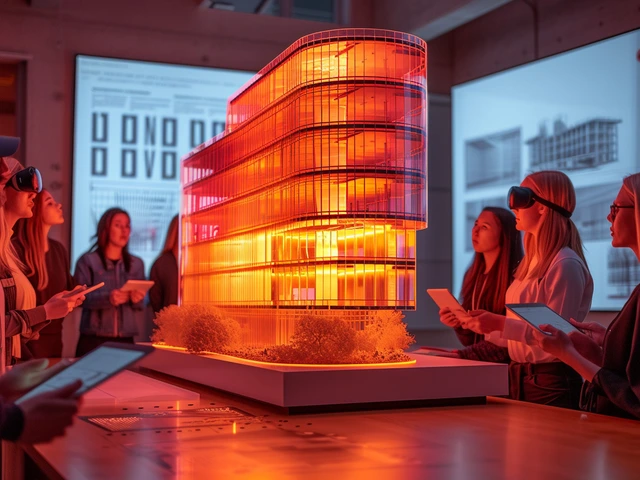Unraveling High-Tech Architecture: An Introduction
The first brush strokes of high-tech architecture were painted in the late 20th century, marking a departure from traditional design principles towards an integration of technology and architecture. This style merges functional and aesthetic aspects of construction, emphasizing transparency, flexibility, and innovation. Through the use of industrial materials like steel, glass, and concrete, along with cutting-edge technologies, high-tech buildings stand out not just for their futuristic appearances but also for their commitment to sustainability and efficiency.
Originating from the minds of pioneering architects like Richard Rogers and Norman Foster, high-tech architecture was a response to the growing concerns over urbanization and the environmental impact of buildings. The ethos of this architectural style is deeply rooted in the belief that technology can provide solutions to these challenges, leading to the creation of buildings that are not only visually captivating but also serve as a model for sustainable living in urban environments.
Iconic High-Tech Structures Around the World
One cannot discuss high-tech architecture without mentioning emblematic buildings such as the Pompidou Centre in Paris, the Lloyd's building in London, and the Federation Square in my home city of Melbourne, Australia. These structures embody the principles of high-tech architecture, showcasing innovative use of materials, structural expressiveness, and adaptability. The Pompidou Centre, for example, revolutionized museum design with its exposed structure and mechanical systems, making the building itself an exhibit of high-tech art.
The Lloyd's building, with its external service towers and modular design, reflects the adaptability and functionality emphasized in high-tech architecture. Meanwhile, Federation Square illustrates how the style can be adapted to reflect local culture and community needs, integrating public spaces and digital technology to create a dynamic urban center.
Emerging Technologies Shaping High-Tech Architecture
As we delve deeper into the 21st century, emerging technologies continue to shape the trajectory of high-tech architecture. Innovations such as 3D printing, smart materials, and sustainable energy solutions are becoming integral to the design and construction of buildings. These technologies allow for unprecedented precision, customization, and efficiency, pushing the boundaries of what is architecturally possible.
The use of smart materials, for instance, enables buildings to respond dynamically to environmental conditions, improving energy efficiency and comfort. Meanwhile, 3D printing allows for the creation of complex, customized components at a lower cost and environmental impact, potentially revolutionizing the construction industry.
The Role of High-Tech Architecture in Sustainable Development
The increasing emphasis on sustainable development has made high-tech architecture more relevant than ever. By integrating green technologies such as photovoltaic panels, green roofs, and energy-efficient systems, high-tech buildings can significantly reduce their carbon footprint while promoting a healthier urban environment.
Moreover, high-tech architecture encourages the use of recycled and sustainable materials, further contributing to environmental conservation. The commitment to sustainability within this architectural style is not only about reducing environmental impact but also about envisioning a future where buildings can actively contribute to the health of the planet.
Envisioning the Future: High-Tech Architecture as a Pathway to a Technological Utopia
Looking towards the future, high-tech architecture holds the promise of shaping cities that are more sustainable, efficient, and adaptable. By harnessing the power of technology, architects and developers are challenged to rethink the relationship between humans and their built environment, pushing towards a vision of a technological utopia.
In this vision, buildings are not merely structures but dynamic entities that interact with their surroundings, contributing to the well-being of their inhabitants and the environment. The pursuit of this technological utopia through high-tech architecture is a testament to the endless possibilities that arise when design and technology converge, offering a glimpse into a future where our urban landscapes are transformed for the better.




Leave a Comments